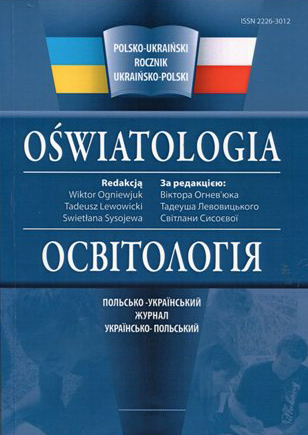SKILLS DEMAND AND SUPLY IN THE EUROPEAN UNION
DOI:
https://doi.org/10.28925/2226-3012.2017.6.176180Keywords:
demand, higher education, labor market, offer, specialistsAbstract
The author of the article presents an analysis of the current situation of demand and supply of specialists in the European Union. The basis for the analysis is the reports of the European Commission, which widely cover this issue. It is worth noting that different EU countries feel the problems of supply and demand in different ways. Their conformity is observed only in Germany, where the number of students graduate each year and enter the labor market in search of work coincides with the requirements of employers in terms of the number of specialists. Other EU countries are in demand for specialists in the scientific, engineering and technology sectors and a quantitative shortage of teachers and doctors. The study is devoted to the questions related to factors that affect the matching between the demand and supply of teachers and doctors. Among such factors is the increase in population, health and education costs. The number of school children is the dominant factor in the demand for teachers. Another factor is educational programs that determine the demand for subject teachers. The policies and priorities of the curriculum have a dominant influence in determining the different types of teachers as well. The demand for physicians depends on the health system. The offer of doctors may differ due to differences in the industry, in particular, the accessibility of education and training for doctors, as well as the conditions of medical service. The results of this study can contribute to a deeper understanding of the current state of the regulating process of higher education interaction with the labor market in Ukraine.
References
Bartlett, W., Uvalic, M., & others. (2016). From University to Employment: Higher Education Provision and Labour Market Needs in the Western Balkans. Europian Commission. Retrieved from https://ec.europa.eu/ education/sites/education/files/2016-higher-education-labour-market-balkans_en.pdf (eng).
Donitsa-Schmidt, S., & Zuzovsky, R. (2014). Teacher Supply and Demand: The School Level Perspective. American Journal of Educational Research, 2, 6. Retrieved from http://pubs.sciepub.com/education/2/6/14/ (eng). de Weert E. (2011, December). Perspectives on Higher Education and the labour market. IHEM. CHEPS Thematic report, 62. Retrieved from http://www.utwente.nl/mb/cheps/publications/ Publications%202011/ C11EW158%20Final%20version%20Themarapport%20onderwijs%20-%20arbeidsmarkt.pdf (eng).
Key Data on Teachers and School Leaders in Europe. (n.d.). (2013). European Commission; EACEA; Eurydice.
Retrieved from http://eacea.ec.europa.eu/ education/eurydice/documents/key_data_series/151EN.pdf (eng).
Kottmann, An., & DeWeert, Egb. (2013). Higher Education and the Labour Market: International Policy Frameworks for Regulating Graduate Employability. Centre for Higher Education Policy Studies. Retrieved from http:// www.ihem.nl/themereports/ C13EW021%20Thematisch%20rapport%20Higher%20Education%20and%20 the%20Labour%20Market.pdf (eng).
Machin, St., & McNally, S. (2007). Higher education and the labour market. Centre Piece. Retrieved from http:// eprints.lse.ac.uk/4615/1/ Higher_education_and_the_labour_market.pdf Mospan, N. (2016). Teacher education graduates in Ukraine: Current state of play.
Cogent Education. doi.org/10.1080/2331186X.2016.1221192 (eng).
OECD (2016). An in-depth analysis of the labour market relevance and outcomes of highere ducation systems.
Directorate for Education and Skills. Retrieved from http://www.oecd.org/edu/skills-beyond-school/skills- beyondschool/Labour%20market%20Background%20Paper,%20Stakeholder%20Forum%2017%20June%20 2016.pdf (eng).
Schulz, E. (2005). The Influence of Supply and Demand Factors on Aggregate Health Care Expenditure with a Specific Focus on age Composition. ENEPRI Research Report № 16. Retrieved from http://aei.pitt. edu/9490/2/9490.pdf (eng).
Simoens, S., & Hurst, J. (2006). The Supply of Physician Services in OECD Countries. OECD Health Working Papers, 21. Retrieved from http://www.oecd.org/els/health-systems/35987490.pdf (eng).
Skills supply and demand in Europe. (n.d.). (2012). Cedefop. Methodological framework. Research paper № 25.
Retrieved from http://www.cedefop.europa.eu/en/publications-and-resources/publications/3052 (eng).
Teachers Matter. Attracting, developing and retaining effective teachers. OECD. (n.d.). (2005). Retrieved from http:// www.nefmi.gov.hu/letolt/nemzet/ oecd_publication_teachers_matter_english_061116.pdf (eng).
The International Market for Medical Doctors: Perspectives on the Positioning of the UK. (2003). University of Man- chester, Final Report. Retrieved from http://www.aneezesmail.co.uk/PDF%20files/ overseasdrsreport.pdf (eng).
Published
How to Cite
Issue
Section
License
Copyright (c) 2017 Наталія Мосьпан

This work is licensed under a Creative Commons Attribution-NonCommercial 3.0 Unported License.
Content Licensing: Creative Commons Attribution Non-Commercial
The author allows:
- Share — copy and redistribute the material in any medium or format
- Adapt — remix, transform, and build upon the material
Under the following terms:
-
Attribution — You must give appropriate credit, provide a link to the license, and indicate if changes were made. You may do so in any reasonable manner, but not in any way that suggests the licensor endorses you or your use.
-
NonCommercial — You may not use the material for commercial purposes.
The authors reserve the right to authorship of the work and pass the first publication right of this work to the journal under the terms of a Creative Commons Attribution License, which allows others to freely distribute the published research with the obligatory reference to the authors of the original work and the first publication of the work in this journal.
The authors have the right to conclude separate supplement agreements that relate to non-exclusive work distribution in the form in which it has been published by the journal (for example, to upload the work to the online storage of the journal or publish it as part of a monograph), provided that the reference to the first publication of the work in this journal is included.





